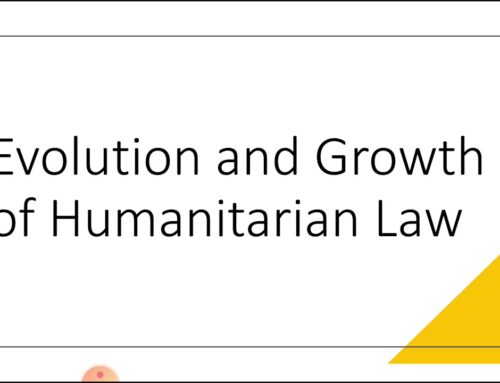– Abul Kalam Azad Sulthan, Advocate-Commissioner of Oaths, High Court of Judicature at Madras and Madurai Bench of Madras High Court & Partner, Spicy Law Firm.
You may wonder if unaided educational institutions fall under the scope of the Employees’ State Insurance (ESI) Act. Recent rulings, particularly from the Calcutta High Court, clarify that both charitable and educational organizations, which include unaided schools, are classified as ‘establishments’ under Section 1(5) of the ESI Act. This means that if you run or are involved with such institutions, they are likely subject to the provisions of the ESI Act, ensuring that your staff receive vital health benefits and protections.
Overview of the ESI Act
For those seeking to understand the Employees’ State Insurance Act of 1948, commonly known as the ESI Act, it serves as a social security legislation designed to provide financial protection to employees in case of sickness, maternity, and employment injuries. The Act establishes a system of mandatory health insurance for workers in various establishments, ensuring they and their dependents receive necessary medical and financial support. Understanding the scope and provisions of the ESI Act is crucial, especially for educational institutions, as highlighted by recent rulings involving the applicability of the Act to unaided educational institutions.
Definition of Establishment
Around the ESI Act, the term “establishment” is defined broadly to include various types of organizations engaged in industrial, commercial, agricultural, or other activities. Importantly, this definition encompasses educational institutions that employ staff for teaching, thus falling within the remit of the law. The interpretation of “or otherwise” in Section 1(5) has been pivotal in extending the Act’s coverage to include not only traditional commercial establishments but also those serving educational or charitable purposes.
Key Provisions of the ESI Act
Along with providing health insurance, the ESI Act includes provisions for cash benefits during periods of sickness, maternity benefits, and medical care for insured persons. The Act aims to promote the welfare of employees by mandating certain contributions from employers and employees to fund the social security scheme. This ensures that workers are equipped with the necessary financial support during life-altering situations, thereby underscoring the importance of coverage for all eligible institutions, including educational establishments.
But the significance of these provisions extends beyond mere financial benefits. The ESI Act mandates a structured approach to employee welfare, fostering a safety net that protects the economic well-being of employees and their families. Recent decisions, including those by the Calcutta High Court, affirm that unaided educational institutions employing teachers and staff are classified as establishments under the Act. Therefore, ensuring that you remain compliant not only protects your institution but also provides crucial support for your workforce’s health and security.
Legal Framework Governing Educational Institutions
It is important to understand that the legal framework governing educational institutions in India is primarily shaped by various laws and regulations, including the Employees’ State Insurance Act, 1948. This framework ensures that institutions, whether public, private, aided, or unaided, adhere to specific standards, particularly regarding employee welfare and benefits, such as those mandated by the ESI Act. You must be aware that non-compliance can lead to significant legal implications for your institution.
Classification of Educational Institutions
By examining the nature and purpose of educational institutions, they can be classified as either charitable or commercial. This classification is significant as it determines eligibility for various legal provisions, including the applicability of the ESI Act. You should note that institutions providing education typically fall under the ambit of the law, given their role in employing staff to facilitate learning.
Type of Educational Institutions Covered
On analyzing the types of educational institutions covered under the ESI Act, it becomes clear that both recognized and unrecognized schools, along with higher educational institutions, are included. This means that whether your institution is a public, private, or aided entity, you are likely to be subject to the provisions of the ESI Act, as exemplified by the Calcutta High Court ruling that affirmed the applicability of the ESI Act to various educational institutions.
Consequently, it’s vital for you to understand that if your institution falls into categories like public, private, aided, or even unaided schools, you are likely covered under the ESI Act. This coverage extends to organizations that, by their nature, employ teachers and staff for educational purposes. Thus, staying compliant with the provisions of the ESI Act is vital for the smooth functioning of your educational institution and the welfare of your employees.
The Calcutta High Court Ruling
Now, the Calcutta High Court recently ruled that educational institutions, including unaided schools, fall under the definition of “establishment” as per Section 1(5) of the Employees’ State Insurance Act, 1948. This ruling confirmed the applicability of the ESI Act to various types of educational institutions, thereby reinforcing the legal framework that governs their responsibilities towards employees.
Case Background
With the respondent-writ petitioners challenging notifications from the Labour Department that extended ESI Act provisions to educational institutions, the court examined the validity of these notifications. The schools in question, operated by a charitable society, were deemed to be covered under the ESI Act, leading to significant implications for employment and benefits for staff.
Interpretation of Section 1(5)
Interpretation of Section 1(5) of the ESI Act was pivotal in this case, specifically regarding the phrase “or otherwise.” The court interpreted this broad term to encompass educational institutions, clarifying that they are indeed subject to the provisions of the ESI Act.
High on the court’s agenda was the determination of whether educational institutions could be classified as “establishments” under Section 1(5). Through careful analysis of relevant judgments and the dictionary meanings of terms like “institution,” the court concluded that institutions aimed at education or charity are included within the ambit of the ESI Act. This interpretation opens the door for all types of educational entities, including unaided institutions, to ensure proper employee welfare under the Act.
Implications for Unaided Educational Institutions
All unaided educational institutions, including those run by trusts and societies, are now encompassed under the applicability of the Employees’ State Insurance Act (ESI Act). Following the recent ruling by the Calcutta High Court, your institution must comply with the provisions set forth in the ESI Act, ensuring that your educational establishment meets the necessary employee welfare standards.
Employment and Coverage Under ESI
Before considering the implications of ESI coverage, it’s important to understand that if your institution employs a certain number of staff for educational purposes, it falls under the definition of ‘establishment’ as per Section 1(5) of the ESI Act. This coverage extends to all educational institutions, including unaided ones, making it imperative for you to adhere to the prescribed regulations.
Responsibilities of Educational Institutions
With the extension of ESI Act applicability to unaided educational institutions, you now bear the responsibility of enrolling your employees under the ESI scheme. This includes adhering to guidelines regarding contributions, providing necessary documentation, and ensuring that your faculty and staff are aware of their rights and benefits under the ESI Act.
In fact, you must implement efficient processes to manage ESI-related enrollments, contributions, and claims. Failure to comply can lead to penalties or legal challenges, as highlighted by the recent rulings in cases involving educational institutions. Keeping your records up to date and providing your employees with regular training on their ESI entitlements will ensure that your institution operates within the legal framework while promoting employee well-being.
Arguments For and Against Inclusion
Keep in mind the ongoing debate surrounding the applicability of the Employees’ State Insurance (ESI) Act to unaided educational institutions. Proponents argue that the ESI Act should cover these institutions as they employ staff for educational purposes and contribute to employee welfare, aligning with the Act’s aim of providing social security to workers. This perspective is backed by the recent Calcutta High Court ruling, which confirmed that educational organizations fall within the definition of “establishment” under Section 1(5) of the ESI Act.
Proponents’ Perspective
The supporters of including unaided educational institutions under the ESI Act emphasize that such establishments contribute significantly to educating the workforce. By extending ESI benefits, you ensure that teachers and staff have access to social security, enhancing their welfare. This alignment with the principles of the ESI Act fosters a more supportive environment in the education sector.
Opponents’ Perspective
Between the proponents and opponents, the latter express concerns regarding the financial burden that ESI contributions may impose on unaided educational institutions. They argue that these institutions already face significant financial pressures, and complying with ESI requirements could lead to increased fees for students or even jeopardize the institutions’ operations.
Understanding the opponents’ perspective involves recognizing their argument that extending ESI coverage could hinder the autonomy of unaided educational institutions. They contend that these institutions, which often operate on tight budgets, may struggle to meet the additional financial demands imposed by ESI contributions. This could ultimately affect the quality of education provided and limit access for students. Balancing the welfare of educators with the operational limitations of these schools is a complex issue that warrants careful consideration.
Comparison with Other States’ Regulations
To understand how the applicability of the ESI Act varies, it’s valuable to compare regulations across different states. The interpretation and implementation of the Act can differ, impacting educational institutions significantly. The following table highlights some of these differences:
| State | Application of ESI to Educational Institutions |
| West Bengal | Extends ESI to all educational institutions, including unaided schools. |
| Maharashtra | Excludes unaided institutions from ESI coverage. |
| Karnataka | Includes only aided institutions under ESI. |
Variations in ESI Act Application
Before analyzing these variations, it’s important to note that the differing interpretations of the ESI Act can create significant implications for your institution. Each state’s government may determine the applicability of the Act based on its own policies and educational landscape, leading to inconsistent requirements even within similar institutions.
Impact of State Policies
Below, you’ll find that state policies play a substantial role in shaping how the ESI Act is enforced. The absence or presence of specific regulations can mean the difference between needing to comply with additional provisions or operating under a more streamlined framework.
A close examination reveals that in states like West Bengal, educational institutions, including unaided ones, are compelled to comply with ESI regulations, which ensures coverage for employees. In contrast, states like Maharashtra may allow more leniencies, potentially placing you at a disadvantage in terms of employee benefits. Such discrepancies often lead to confusion among educational institutions about their responsibilities, underscoring the importance of staying informed about local regulations to ensure compliance and support for your staff.
Final Words
Considering all points, you can conclude that unaided educational institutions, including those run by charitable societies, are indeed covered under the Employees’ State Insurance Act as clarified by the Calcutta High Court. The court’s interpretation of ‘establishment’ under Section 1(5) includes educational institutions, thereby extending the benefits of the ESI Act to them. This means your institution, if it meets the defined criteria, is obligated to comply with the provisions of the ESI Act, ensuring adequate protection for your employees.







Leave A Comment